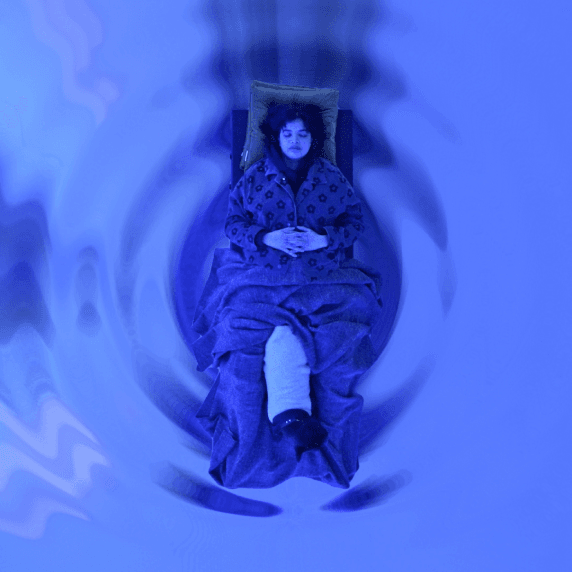A beginner’s guide to alternative meditation
From demolition therapy to conscious clubbing, start your alternative meditation journey here
From demolition therapy to conscious clubbing, start your alternative meditation journey here
It’s easy to feel overwhelmed by the pace and pressures of modern life, to feel like you should be working harder, socialising more, or being more productive. Every post on our social media feeds is designed to grab our attention, but we can’t possibly give it to everything all of the time, – we need space, time to think.
Meditation is a simple practice available to everyone who wants to reduce stress, introduce calmness and clarity, and improve their overall level of happiness. It’s no wonder that the number of people turning to meditation is skyrocketing, and has tripled since 2012 – the number of people globally who now meditate is between 200-500 million people. No longer is it a practice for those seeking spiritual enlightenment. Meditating is mainstream.
The NHS even has a section of its website dedicated to mindfulness meditation, where it describes the technique as being able to “help us enjoy the world around us more and understand ourselves better.” It adds that “mindfulness is recommended by the National Institute for Health and Care Excellence as a way to prevent depression in people who have had three or more bouts of depression in the past.”
So this isn’t a bad place to start, nor are other more classic meditation methods such as mantra, or progressive relaxation. But if you find these ideas offputting, or if you just want to try something a little different, we’ve gathered a list of alternative methods to consider, from demolition therapy, to conscious clubbing. Find out more below:
Do the cult classic Wim Hof method
The Dutch endurance athlete Wim Hof got his nickname ‘The Iceman’ by breaking a number of records relating to exposure to extreme cold. He climbed Mount Kilimanjaro in just a pair of shorts, ran a half marathon above the Arctic Circle barefoot, and, perhaps most famously, stood in a container while covered with ice cubes for more than 112 minutes.
Not that we’re asking you to do any of the above – these are just things Wim Hof claims his cold therapy method enabled him to endure. In a video series on his website, he teaches “ordinary people” how to take more control of their own bodies starting with breathing exercises, and gradually introducing the body to low temperatures with increasingly cold showers. Benefits include more energy, better sleep, less stress, sharpened focus, willpower, and stronger immune system.
Check out Frank Ocean’s surprise Blonded Radio Christmas special, which features an interview with The Iceman himself as well as a near nine-minute track which he directly inspired.
The Wim Hof technique includes these steps:
- Take one strong inhalation through the nose.
- Let out a relaxed exhalation through the mouth.
- Repeat for 30 breaths.
- On your 30th breath, exhale to 90% of your capacity, and hold for as long as you can.
- When you feel your body really needs to take a breath, inhale fully and hold for 15 seconds before releasing.
Do three rounds of the above. Eventually, the breathing will feel like a fluid wave flowing through your lungs. It’s important to use all of your lungs, so use the cue ‘belly, chest, head’ to encourage doing so. Make sure you’re relaxing your jaw, neck, and shoulders. It takes practice!
Try a brain-sensing headband
Muse is a brain-sensing headband that works a bit like a FitBit for your brain, using EEG sensors to relay what’s going on in your head directly to your phone. It uses real-time biofeedback to help you “refocus during the day and recover overnight”.
According to its website, Muse is “an application of neurofeedback, a tool for training yourself to regulate your brain waves. Neurofeedback began gaining popularity years ago in clinical contexts, as research showed it had the potential to help people struggling with conditions like ADHD and PTSD.”
The headband uses “advanced signal processing to interpret your mental activity to help guide you.” When your mind is calm, you will hear peaceful weather, but if your thoughts start to race and spiral out of control, you'll start to hear a thunderstorm. “That’s your cue to go, like, ‘Oh shit! I’m thinking about the grocery list again! Back to meditation!’” Ariel Garten, the co-founder of Muse, told Vox.
Explore Muse’s immersive soundscapes by selecting one here.
Simple Habit
Simple Habit was founded by Yunha Kim in Spring 2016, and positions itself as meditation for busy people. Yunha quit her job as an investment banker on Wall Street to build her first startup, but quickly found herself having to manage extreme stress alongside a heavy workload, so she turned to meditation. Yunha saw dramatic improvements to her quality of life very quickly, and decided to build Simple Habit to help busy people such as herself.
“Simple Habit is on a mission to empower humans to stress less, achieve more, and live better,” the website says. “Designed by top meditation experts, Simple Habit offers more than 2,000 guided meditations for any situation and mood – including before sleep, taking a work break, commuting, and more.”
Find out more here.
Demolition Therapy
All these apps and pieces of technology sound okay, but what if you actually just want to smash loads of stuff and make a huge mess instead? We’ve all had the urge, and thankfully demolition therapy is now a genuine thing you can do without destroying your own home.
Introducing Wreck Room – London’s first rage room – “Pick your music. Pick your weapon. Get wrecking.”
“It’s all very simple,” the website says, “sessions start at 10 minutes each per person, you choose a weapon from our selection, pick a couple of songs and get to smashing. We provide safety gear but please come wearing appropriate clothing, closed sturdy shoes, long sleeves and trousers.”
“We’ve lined up a load of old, unusable technology and a selection of hard-hitting tools. We’ll then put you in a room together and leave you to it.”
Sign up to the mailing list here for booking dates.
Conscious Clubbing
Dance as meditation is as ancient as our humanity. Sacred dancing is a fixture of almost all cultures and in many religions – Daoists, Buddhists, and Hindus all involve dance in teachings. Learn more about dance as meditation from a Hindu perspective with Divya Goswami Dikshit’s TEDxDelhi talk.
Ecstatic Dance is a form of dynamic meditation, where music is the teacher, there is no complex choreography or method to learn, and you simply move in the way your body is telling you. Many events and communities of dance across the world are talk-free and alcohol free spaces, featuring either live DJs or playlists that span Hip Hop, Reggae, Psytrance, and everything in between.
A good way to get involved would be to head to a festival or retreat dedicated to “conscious dance,” such as the High on Life Retreat in Portugal or Conscious Dance Festival, which has events in Barcelona and Berlin.
Conscious movement exercises, like Tai Chi and Qigong, are great routes into yourself through the body too. Just make sure you’re learning from official practitioners and respect the culture these ancient practices come from.
Meditate like David Lynch
Transcendental meditation is repped by filmmaking auteur David Lynch. It’s a silent mantra meditation, which promotes ‘active thinking’ (basically, how our brains get to solve a new or persistent problem), natural calm, and overall bodily and mental awareness. It was created by Maharishi Mahesh Yogi in India in the 1950s.
The Twin Peaks creator apparently came up with the plan for Mulholland Drive after some meditating sessions. He also says it helped rid himself of anger and anxiety: “It was as if I was in an elevator and they snipped the cables,” he says, in the most Lynchian analogy possible.
But the TM method isn’t the most accessible – actually, it’s pretty expenny. An official course can set you back $1,000. So here’s the basics; you practice for 20 minutes twice a day, sitting in any way that’s comfortable for you with your eyes closed. You work towards total body and mind stillness – try to let your mind go blank. Next, you repeat something – anything. A word, prayer, mantra, affirmation. Focus on breathing in and out repeatedly. There, saved you some cash.



















